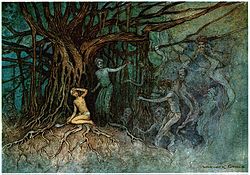
In folklore, a ghost is the soul or spirit of a dead person or non-human animal that is believed to be able to appear to the living. In ghostlore, descriptions of ghosts vary widely, from an invisible presence to translucent or barely visible wispy shapes to realistic, lifelike forms. The deliberate attempt to contact the spirit of a deceased person is known as necromancy, or in spiritism as a séance. Other terms associated with it are apparition, haunt, haint, phantom, poltergeist, shade, specter, spirit, spook, wraith, demon, and ghoul.
A haunted house, spook house or ghost house in ghostlore is a house or other building often perceived as being inhabited by disembodied spirits of the deceased who may have been former residents or were otherwise connected with the property. Parapsychologists often attribute haunting to the spirits of the dead who have suffered from violent or tragic events in the building's past such as murder, accidental death, or suicide.

A ghost story is any piece of fiction, or drama, that includes a ghost, or simply takes as a premise the possibility of ghosts or characters' belief in them. The "ghost" may appear of its own accord or be summoned by magic. Linked to the ghost is the idea of a "haunting", where a supernatural entity is tied to a place, object or person. Ghost stories are commonly examples of ghostlore.

Bibhutibhushan Bandyopadhyay ; 12 September 1894 – 1 November 1950) was a Bengali writer. His best known works are the autobiographical novel Pather Panchali, Aparajito (Undefeated), Chander Pahar and Aranyak.
The Churel, also spelled as Charail, Churreyl, Chudail, Chudel, Chuṛail, Cuḍail or Cuḍel, is a mythical or legendary creature resembling a woman, which may be a demoniacal revenant said to occur in South Asia and Southeast Asia, particularly popular in India, Bangladesh, Nepal and Pakistan. The churel is typically described as "the ghost of an unpurified living thing", but because she is often said to latch on to trees, she is also called a tree-spirit. According to some legends, a woman who dies very cruely will come back as a revenant churel for revenge, particularly targeting the males in her family.

Shirshendu Mukhopadhyay is a Bengali author from India. He has written stories for both adults and children. He is known for creating the relatively new fictional sleuths Barodacharan and Shabor Dasgupta.

The Pashchimbanga Bangla Akademi is the official regulatory body of the Bengali language in West Bengal, India. It was founded on 20 May 1986 in Kolkata to act as the official authority of the language and is entrusted with the responsibility of reforming Bengali spelling and grammar, compiling dictionaries, encyclopedias and terminologies and promoting Bengali language and culture in West Bengal. Though the Akademi has no enforcement power over their rules and regulations, they are widely accepted by the Governments of West Bengal and Tripura as well as a considerable number of private publishing houses and institutions such as the Oxford University Press and the Ramakrishna Mission.
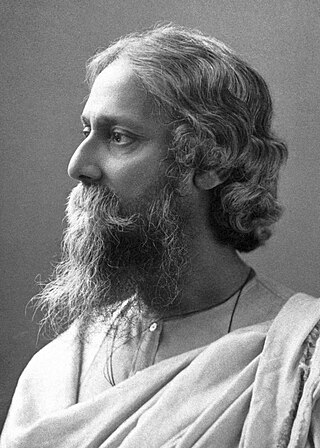
Bengali literature denotes the body of writings in the Bengali language and which covers Old Bengali, Middle- Bengali and Modern Bengali with the changes through the passage of time and dynastic patronization or non-patronization. Bengali has developed over the course of roughly 1,300 years. If the emergence of the Bengali literature supposes to date back to roughly 650 AD, the development of Bengali literature claims to be 1600 years old. The earliest extant work in Bengali literature is the Charyapada, a collection of Buddhist mystic songs in Old Bengali dating back to the 10th and 11th centuries. The timeline of Bengali literature is divided into three periods: ancient (650–1200), medieval (1200–1800) and modern. Medieval Bengali literature consists of various poetic genres, including Hindu religious scriptures, Islamic epics, Vaishnava texts, translations of Arabic, Persian and Sanskrit texts, and secular texts by Muslim poets. Novels were introduced in the mid-19th century. Nobel laureate Rabindranath Tagore is the best known figure of Bengali literature to the world. Kazi Nazrul Islam, notable for his activism and anti-British literature, was described as the Rebel Poet and is now recognised as the National poet of Bangladesh.

Ghost hunting is the process of investigating locations that are purportedly haunted by ghosts. Typically, a ghost-hunting team will attempt to collect evidence supporting the existence of paranormal activity. Ghost hunters also refer to themselves as paranormal investigators.
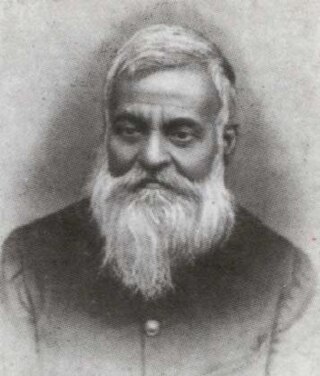
Trailokyanath Mukhopadhyay or T. N. Mukharji in British Indian Government records was an Indian public servant who served as a curator of the Indian Museum at Calcutta, and was a renowned author who wrote both in English and Bengali. He was in-charge of organizing exhibits for the Calcutta International Exhibition of 1883, the Amsterdam Exhibition in the same year, the 1886 Colonial and Indian Exhibition, and the 1888 Glasgow International Exhibition. His travels in Europe as part of this was published as a popular travelogue A Visit to Europe (1889).
A bhoota or bhuta is a supernatural creature, usually the ghost of a deceased person, in the popular culture, literature and some ancient texts of the Indian subcontinent. Interpretations of how bhootas come into existence vary by region and community, but they are usually considered to be perturbed and restless due to some factor that prevents them from moving on. This could be a violent death, unsettled matters in their lives, or simply the failure of their survivors to perform proper funerals.
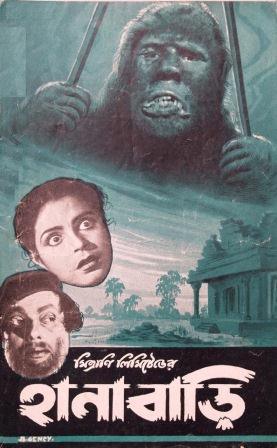
Hanabari [ Bengali: হানাবাড়ী ] is an Indian Bengali black and white thriller film released on 13 June 1952. Story, screenplay and direction were done by Bengali writer Premendra Mitra. The music director was Pabitra Chattapadhyaya. This movie was produced by Fakhrul Islam Khan in the banner of Mitrani Limited.
Riksundar Banerjee or Riksundar Bandyopadhyay, is a fiction writer from Kolkata, West Bengal, India.
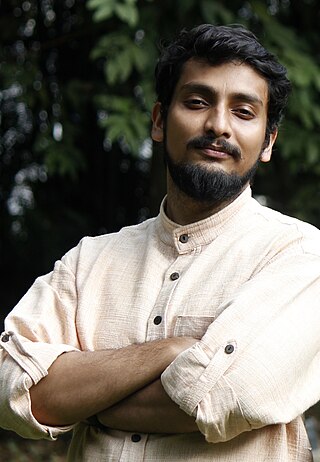
Soukarya Ghosal is an Indian filmmaker, director, screenwriter, illustrator and music composer. He is widely considered for his work in Rainbow Jelly, a food fantasy film for the children in Bengali Cinema. His first feature film was Pendulum, bagged three awards in the 4th Mirchi Music Awards Bangla 2014 by Radio Mirchi.
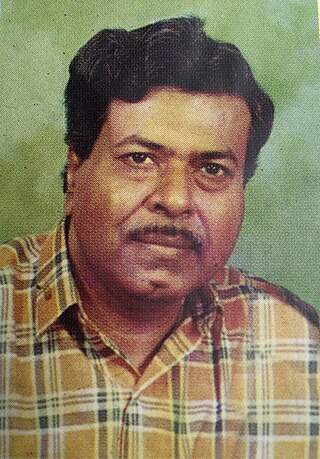
Taradas Bandyopadhyay was a Bengali novelist, short story writer and editor.
Taranath Tantrik is a fictional character of Bengali literature created by the legendary Bengali novelist Bibhutibhushan Bandyopadhyay and later by his son Taradas Bandyopadhyay.

Ghost of the Golden Groves is a critically acclaimed 2019 Indian Bengali-language Experimental horror fantasy film directed by Aniket Dutta and Roshni Sen. The film consists of two stories, the second of which is loosely based on a short story by Bibhutibhushan Bandyopadhyay. The film stars Joyraj Bhattacharjee and Bibhuti Soumyajit Majumdar.


